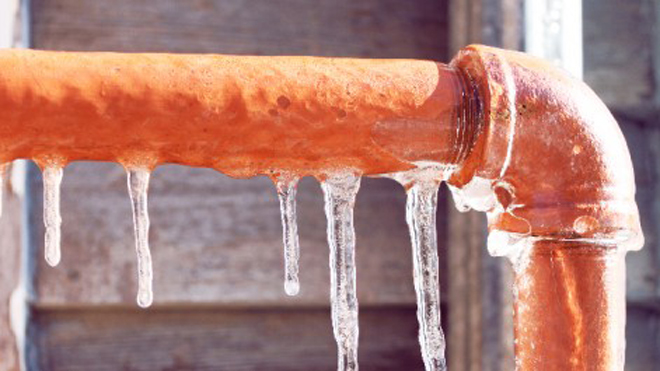Ways to Maintain Your Pipes from Freezing Issues: Essential Tips
Ways to Maintain Your Pipes from Freezing Issues: Essential Tips
Blog Article
How do you really feel with regards to Helpful Tips to Prevent Frozen Pipes this Winter?

Winter can ruin your pipes, specifically by freezing pipelines. Here's how to avoid it from happening and what to do if it does.
Intro
As temperature levels drop, the risk of frozen pipes boosts, possibly causing pricey repair work and water damages. Understanding how to avoid frozen pipes is crucial for house owners in chilly climates.
Understanding Icy Pipes
What creates pipes to freeze?
Pipes ice up when revealed to temperature levels listed below 32 ° F (0 ° C) for prolonged periods. As water inside the pipelines freezes, it broadens, taxing the pipeline walls and potentially creating them to burst.
Dangers and problems
Icy pipes can result in water system disturbances, residential or commercial property damage, and pricey repair work. Burst pipelines can flood homes and cause considerable architectural damages.
Signs of Frozen Piping
Recognizing frozen pipelines early can prevent them from rupturing.
Just how to recognize frozen pipelines
Try to find lowered water circulation from faucets, unusual odors or noises from pipelines, and visible frost on revealed pipes.
Prevention Tips
Shielding at risk pipelines
Cover pipelines in insulation sleeves or use warmth tape to secure them from freezing temperature levels. Concentrate on pipes in unheated or exterior areas of the home.
Home heating methods
Keep indoor rooms adequately heated, specifically locations with pipes. Open up closet doors to allow warm air to circulate around pipelines under sinks.
Safeguarding Outdoor Plumbing
Garden hose pipes and outside faucets
Disconnect and drain yard pipes prior to wintertime. Mount frost-proof spigots or cover outdoor faucets with protected caps.
What to Do If Your Pipelines Freeze
Immediate activities to take
If you believe icy pipes, keep faucets open to relieve pressure as the ice thaws. Use a hairdryer or towels taken in hot water to thaw pipes gradually.
Long-Term Solutions
Structural changes
Think about rerouting pipelines far from exterior wall surfaces or unheated locations. Add added insulation to attics, cellars, and crawl spaces.
Updating insulation
Buy top notch insulation for pipelines, attic rooms, and wall surfaces. Appropriate insulation helps keep constant temperatures and lowers the risk of frozen pipes.
Verdict
Protecting against frozen pipelines calls for positive procedures and quick reactions. By recognizing the causes, indications, and preventive measures, homeowners can safeguard their pipes during cold weather.
5 Ways to Prevent Frozen Pipes
Drain Outdoor Faucets and Disconnect Hoses
First, close the shut-off valve that controls the flow of water in the pipe to your outdoor faucet. Then, head outside to disconnect and drain your hose and open the outdoor faucet to allow the water to completely drain out of the line. Turn off the faucet when done. Finally, head back to the shut-off valve and drain the remaining water inside the pipe into a bucket or container. Additionally, if you have a home irrigation system, you should consider hiring an expert to clear the system of water each year.
Insulate Pipes
One of the best and most cost-effective methods for preventing frozen water pipes is to wrap your pipes with insulation. This is especially important for areas in your home that aren’t exposed to heat, such as an attic. We suggest using foam sleeves, which can typically be found at your local hardware store.
Keep Heat Running at 65
Your pipes are located inside your walls, and the temperature there is much colder than the rest of the house. To prevent your pipes from freezing, The Insurance Information Institute suggests that you keep your home heated to at least 65 degrees, even when traveling. You may want to invest in smart devices that can keep an eye on the temperature in your home while you’re away.
Leave Water Dripping
Moving water — even a small trickle — can prevent ice from forming inside your pipes. When freezing temps are imminent, start a drip of water from all faucets that serve exposed pipes. Leaving a few faucets running will also help relieve pressure inside the pipes and help prevent a rupture if the water inside freezes.
Open Cupboard Doors
Warm your kitchen and bathroom pipes by opening cupboards and vanities. You should also leave your interior doors ajar to help warm air circulate evenly throughout your home.

Do you really like reading about 6 Ways to Prevent Frozen Pipes? Place feedback down below. We would be delighted to know your insights about this review. We hope to see you back again in the future. Do you know somebody who is truly interested in the topic? Feel free to share it. We love reading our article about Helpful Tips to Prevent Frozen Pipes this Winter.
Call Today Report this page